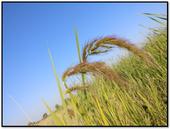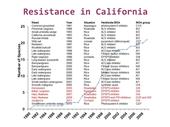- Author: Whitney Brim-DeForest

In 2017, I started getting reports of a watergrass biotype/species (Echinochloa spp.) that was difficult to control using our suite of herbicides registered in rice. At the time, I knew we had multiple herbicide-resistance in late watergrass (Echinochloa phyllopogon), so I initially just thought the resistant biotype was spreading, and had maybe gained resistance to additional herbicide modes of action. However, once I started visiting fields, it quickly became apparent that this was not late watergrass (phenotypically-speaking). It also did not appear to be barnyardgrass (Echinochloa crus-galli), although the Echinochloa species are notoriously difficult to identify, and phenotypically quite variable in...
- Author: Lynn M. Sosnoskie
- Author: Brad Hanson

Prior to the latter half of the 20th century, weed control in agriculture was achieved almost exclusively through mechanical means (e.g. plowing, cultivating, disking, hoeing, and hand-pulling) (Timmons 1970). The earliest (mid-1800’s to mid-1900’s) investigations into chemical weed management focused, primarily, on the use of inorganic compounds such as sodium chloride, sulfuric acid, sodium arsenite, and copper- and iron-sulfate (Appleby 2005; Timmons 1970). Although some products provided an acceptable level of weed control efficacy, the extensive adoption of these chemicals was decidedly limited (Appleby 2005; Timmons 1970).
The successful debut of 2,4-D (1946), an auxinic compound...


